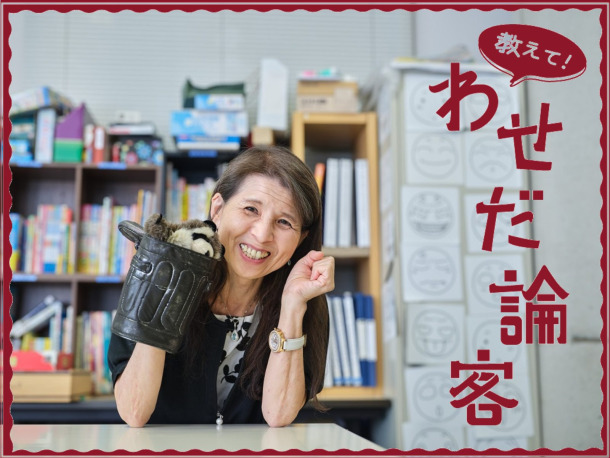
The theme of the 2025 "Lectures by Experts" is "Communication." We will consider communication from the perspectives of several experts. Our fourth guest is Professor Keiko Honda (Faculty of Education and Integrated Arts and Sciences), who specializes in school psychology. We asked Professor Honda, who researches school counseling and anger management* methods, about the essential elements of communication at school and at home.
* Understand and control your anger appropriately.
What is the essence of communication at school and at home?
Both parties need to come to the "space for discussion." There, they need to honestly communicate their feelings and desires. Creating a "safe space" without invading the other person's territory and "waiting" there is an essential element for smooth communication.
INDEX
The role of school psychology and anger management
▼How children's communication skills have changed due to the COVID-19 pandemic
▼The experience of honest confrontation develops people
The role of school psychology and anger management
What kind of research field is "school psychology," Professor Honda's specialty?
This is an academic field that aims to understand the psychological development and learning processes of children and apply this knowledge to educational settings. It has been actively studied in the United States and has developed into a method for comprehensively assessing (evaluating and analyzing) various phenomena that occur in educational settings, such as bullying, school absenteeism, poor academic performance, and developmental disorders, looking at the causes from multiple perspectives, understanding children's strengths and weaknesses, and providing specific support.
Assessment is particularly important. It begins with carefully understanding the background of why a child is struggling with their studies or has behavioral problems. For example, a child who can't write kanji may not be "slacking off," but rather may perceive the character "田" (rice field) as a "block of four squares" or a "combination of lines" rather than as a single kanji character. We investigate which parts of the brain are not functioning well and which stages of information processing are burdened, and then consider how to provide learning support that matches these. This is the distinctive feature of school psychology.
After graduating from university, I worked as a private junior and senior high school Faculty for nine years. This was during the 1980s, a time when schools were in chaos due to school violence and other issues. It was during this time that I became interested in the field of school counseling, and in the 1990s I attended graduate school at Teachers College, Columbia University, where I broadly studied the academic field known as counseling psychology, including clinical psychology, developmental psychology, and industrial psychology. I also came into contact with neuroscientific knowledge, such as cognitive behavioral therapy, as a foundation for counseling, and I hope to bring this knowledge back to Japan and use it in the educational field, a field I continue to research today.
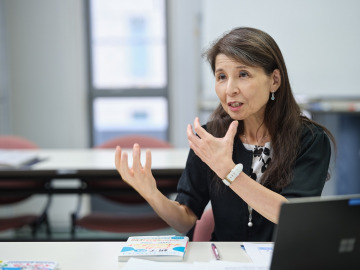
One of Professor Honda's research keywords, "anger management," has been appearing frequently in the news recently. What is it?
Anger management is not simply a "technique for suppressing anger," but rather a way to understand and appropriately express one's feelings. The "anger" mentioned here does not refer to "rage" but to "a chaotic state in which various emotions are mixed together." The research areas include "personal anger management" and "anger management for supporters." The former involves understanding the desires, cognitions, and emotions that cause anger and considering how to deal with them. The latter involves not getting caught up in the angry person, but helping them to quickly calm down and express their desires and emotions appropriately.
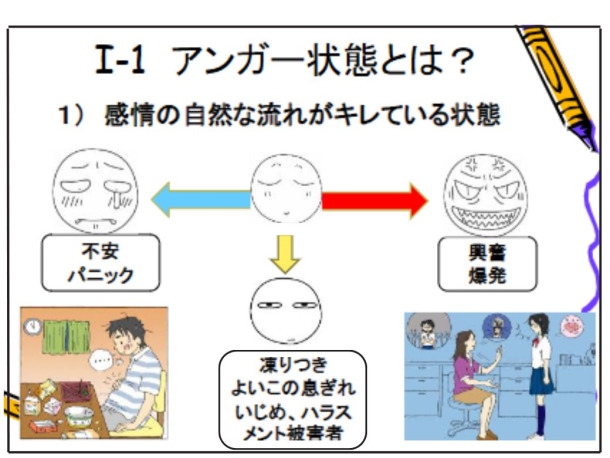
From materials prepared by Professor Honda
Based on the cognitive behavioral therapy I learned in the United States, I propose a five-step anger management methodology tailored to Japanese culture and school settings. It consists of (1) awareness, (2) intellectual understanding, (3) acceptance of characteristics, (4) learning new behaviors, and (5) practicing new behaviors. First, through "awareness," students become aware of their own behavioral patterns, and through "intellectual understanding," they understand why they did so and what will happen if they continue this way. Then, through "acceptance of characteristics," students accept themselves as they are, which leads to "learning new behaviors" and "practicing new behaviors," encouraging the establishment of new behaviors, ways of thinking, and feelings.
Recently in Japan, we have seen an increase in the type of child who is described as "a good kid who runs out of breath." They may be able to endure things at school, but explode at home. Or they may be so anxious that they panic and become aggressive. For these children, we start by telling them it's okay to be angry or cry, and then we help them put their emotions into words without denying them.
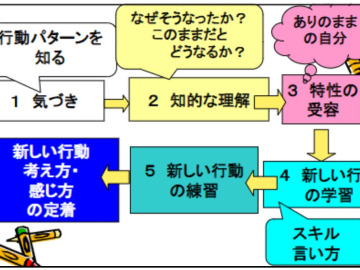
Five-step anger management method. From materials prepared by Professor Honda.
How children's communication skills have changed due to the COVID-19 pandemic
What communication issues are there in children's education settings following the COVID-19 pandemic?
The impact of the COVID-19 pandemic is significant, and I feel that today's children no longer know how to interact with others. For example, first-year university students entering in 2025 were not able to experience many of the events and club activities that took place between junior high and high school. As a result, they tend to be less accustomed to talking to people they meet for the first time or participating in group activities, so they tend to stay alone or only with people they feel comfortable with.
The situation is even more serious for children in the lower grades of elementary school. Because they are restricted from even the experience of "playing hand in hand" with friends during their time in nursery school or kindergarten, they are severely lacking in the learning that fosters social skills, such as fighting with friends and making up. Because they are not exposed to physical contact, it is difficult for them to observe the other person's reaction and adjust accordingly, and they are unable to control their strength when hitting or to correct problems.
In schools, adults tend to immediately intervene and resolve problems, but it is really important to let children gain experience in resolving problems themselves. Without trial and error, they will not be able to judge the dangers. I am very concerned that this will have a long-term impact on children's development.
Are there any specific ways to solve the problems of children who have communication challenges?
Communication challenges can be divided into two categories: "self-expression" and "understanding others." For the former, you need to understand "what you want to communicate" and choose a way to put your feelings and thoughts into words and convey them to the other person. When doing so, it's important to have a variety of ways to make it easy for the other person to understand. For the latter, reading comprehension is necessary. Recently, with the trend of "moving away from letters," an increasing number of children are finding it difficult to accurately grasp the content of written texts.
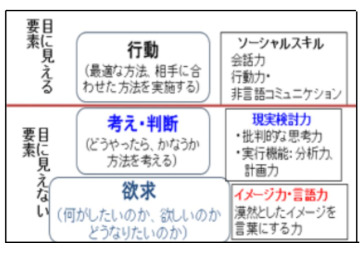
The elements necessary to turn desires into action. From materials prepared by Professor Honda
So, I suggest using a "sheet for organizing events into a sequence" or a "four-panel comic strip" to ask children "What happened?" and "How did you feel at the time?", then visualizing and reflecting on the situation together. This will allow them to see their own actions objectively and think calmly. It is important to develop the ability to understand by asking and inferring the thoughts, feelings, and desires of others that lie behind their visible actions and words.
The experience of honest confrontation develops people
What do you think is essential in communication in the educational field?
I think the most important thing is "empathy." Recognizing that the other person is in trouble and being there for them. However, empathy is different from "sympathy," which means feeling the same as the other person. Rather, you can take a neutral stance and say things like, "That must have been scary" or "That must have surprised you." That alone will put the other person at ease and allow you to talk calmly.
There is another important skill for educators: "Consistency between one's emotions and expressions." Children are sensitive to distrust when there is a discrepancy between a teacher's words and facial expressions. Being able to honestly express emotions is the foundation for building trusting relationships.
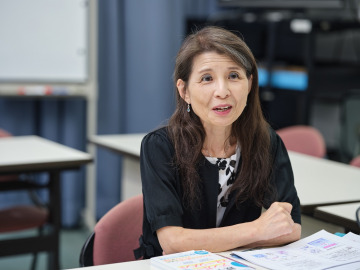
What does Professor Honda think "communication" is?
Both parties need to come to the "space for discussion." This is where we need to honestly communicate our feelings and desires. It's important to provide a "safe space" where the other person can honestly express their feelings and desires, rather than resorting to extreme methods to attract the other person, such as violence, verbal abuse, or sulking. You should never invade the other person's territory. For example, if a mother barges into her child's room and starts yelling at them, the other person won't open up. It's important to be clear about what you want to communicate and wait patiently at the "space for discussion."
Being honest with others, even if you sometimes have conflicts, and having thorough discussions to repair the relationship- the accumulation of such experiences leads to personal growth.
Finally, please give a message to Waseda students.
During your university years, I would encourage you to deepen your self-understanding through group experiences. By experiencing firsthand what you typically say and do in what situations, and then reflecting on what is happening in the situation, why you hold back what you want to say, why you try to take charge without listening to the opinions of others, etc., you will be able to see a side of yourself that you never knew existed.
Today's students are so afraid of failure and isolation that they often end up not speaking their true feelings. However, your student days are a great opportunity to speak your true feelings, clash with others, struggle, and make up. Once you enter society, it becomes difficult to clash honestly due to conflicts and positions. That's why you should use university as an environment to gain experience where you can safely clash and safely make up. This experience will surely support you when you enter society.
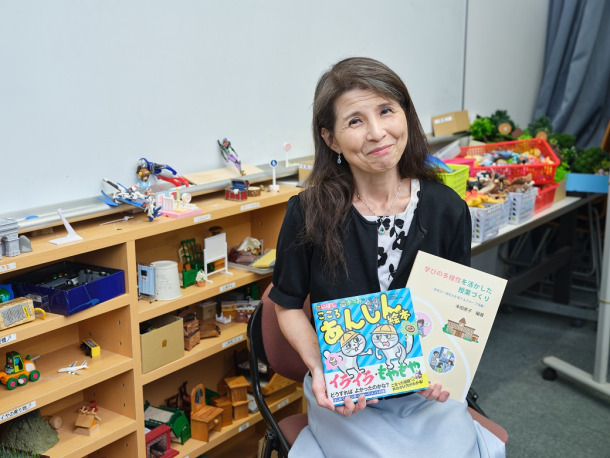
Two of Professor Honda's favorite books. From the left, "Kokoro Anshin Picture Book" by Kumamine, illustrated by Keiko Honda, supervised by Poplar Publishing, and "Creating Lessons that Utilize Diversity in Learning: Group Activities to Cultivate Thinking Skills and Inquiry" edited and written by Keiko Honda (University Publishing).
Keiko Honda
Professor Faculty of Education and Integrated Arts and Sciences. Representative of the Anger Management Study Group. Certified Psychologist, Clinical Psychologist, School Psychologist, and Special Education Support Specialist. After working as a junior high and high school Faculty, she moved to the United States. She studied special needs education and crisis intervention at Columbia University Teachers College, earning a PhD in counseling psychology. After returning to Japan, she worked as a school counselor and Professor in the Department of Human Studies at Tamagawa University before assuming his current position. She works in collaboration with schools, families, and communities to promote comprehensive school counseling, which provides comprehensive support to children and students.
Interview and text: Kenichi Marumo
Photo: Seiji Ishigaki

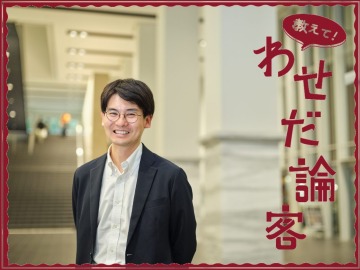
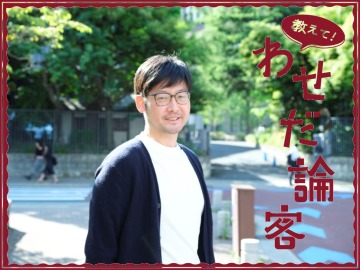
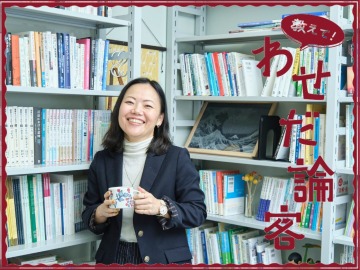
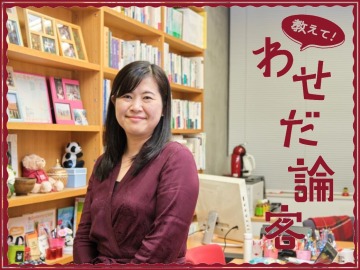
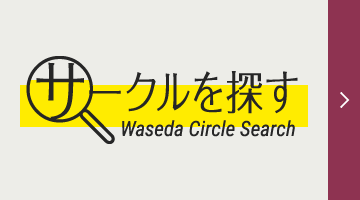
![[Save version] Map of the four main campuses](https://www.waseda.jp/inst/weekly/assets/uploads/2025/09/17cb2975123fc5103172ef60bd98608d-610x458.jpg)

